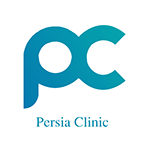Acceptance of all insurances for examination

Online Clinic Persia With Quick Response

Elo Emergency
Coronary artery disease (CAD), also known as ischemic heart disease (IHD),[13] is a group of diseases that includes: stable angina, unstable angina, myocardial infarction, and sudden cardiac death.[14] It is within the group of cardiovascular diseases of which it is the most common type.[15] A common symptom is chest pain or discomfort which may travel into the shoulder, arm, back, neck, or jaw.[4] Occasionally it may feel like heartburn. Usually symptoms occur with exercise or emotional stress, last less than a few minutes, and get better with rest.[4] Shortness of breath may also occur and sometimes no symptoms are present.[4] The first sign is occasionally a heart attack.[5] Other complications include heart failure or an irregular heartbeat.[5]
Risk factors include: high blood pressure, smoking, diabetes, lack of exercise, obesity, high blood cholesterol, poor diet, and excessive alcohol, among others.[7][6] Other risks include depression.[16] The underlying mechanism involves reduction of blood flow and oxygen due to atherosclerosis of the arteries of the heart.[6] A number of tests may help with diagnoses including: electrocardiogram, cardiac stress testing, coronary computed tomographic angiography, and coronary angiogram, among others.[8]
Prevention is by eating a healthy diet, regular exercise, maintaining a healthy weight and not smoking.[9] Sometimes medication for diabetes, high cholesterol, or high blood pressure are also used.[9] There is limited evidence for screening people who are at low risk and do not have symptoms.[17] Treatment involves the same measures as prevention.[18][10] Additional medications such as antiplatelets including aspirin, beta blockers, or nitroglycerin may be recommended.[10] Procedures such as percutaneous coronary intervention (PCI) or coronary artery bypass surgery (CABG) may be used in severe disease.[10][19] In those with stable CAD it is unclear if PCI or CABG in addition to the other treatments improve life expectancy or decreases heart attack risk.[20]
In 2015 CAD affected 110 million people and resulted in 8.9 million deaths.[11][12] It makes up 15.9% of all deaths making it the most common cause of death globally.[12] The risk of death from CAD for a given age has decreased between 1980 and 2010, especially in developed countries.[21] The number of cases of CAD for a given age has also decreased between 1990 and 2010.[22] In the United States in 2010 about 20% of those over 65 had CAD, while it was present in 7% of those 45 to 64, and 1.3% of those 18 to 45.[23] Rates are higher among men than women of a given age.[
Signs and symptoms
Chest pain that occurs regularly with activity, after eating, or at other predictable times is termed stable angina and is associated with narrowings of the arteries of the heart.
Angina that changes in intensity, character or frequency is termed unstable. Unstable angina may precede myocardial infarction. In adults who go to the emergency department with an unclear cause of pain, about 30% have pain due to coronary artery disease.[24]
Risk factors
Coronary artery disease has a number of well determined risk factors. The most common risk factors include smoking, family history,[25] hypertension, obesity, diabetes, lack of exercise, stress, and high blood lipids.[26][27] Smoking is associated with about 36% of cases and obesity 20%.[28] Lack of exercise has been linked to 7–12% of cases.[28][29] Exposure to the herbicide Agent orange may increase risk.[30] Both rheumatoid arthritis and systemic lupus erythematosus are independent risk factors as well.[31][32]
Job stress appears to play a minor role accounting for about 3% of cases.[28]
In one study, women who were free of stress from work life saw an increase in the diameter of their blood vessels, leading to decreased progression of atherosclerosis.[33] In contrast, women who had high levels of work-related stress experienced a decrease in the diameter of their blood vessels and significantly increased disease progression.[33] Having a type A behavior pattern, a group of personality characteristics including time urgency, competitiveness, hostility, and impatience[34] is linked to an increased risk of coronary disease.[35]
Blood fats
High blood cholesterol (specifically, serum LDL concentrations). HDL (high density lipoprotein) has a protective effect over development of coronary artery disease.[36]
High blood triglycerides may play a role.[37]
High levels of lipoprotein(a),[38][39][40] a compound formed when LDL cholesterol combines with a protein known as apolipoprotein(a).
Dietary cholesterol does not appear to have a significant effect on blood cholesterol and thus recommendations about its consumption may not be needed.[41] Saturated fat is still a concern.[41]
Genetics
The heritability of coronary artery disease has been estimated between 40% and 60%.[42] Genome-wide association studies have identified around 60 genetic susceptibility loci for coronary artery disease.[43]
Other
Endometriosis in women under the age of 40[44]
It is unclear if type A personality affects the risk of coronary artery disease.[45][contradictory] Depression and hostility do appear to be risks however.[46]
The number of categories of adverse childhood experiences (psychological, physical, or sexual abuse; violence against mother; or living with household members who were substance abusers, mentally ill, suicidal, or incarcerated) showed a graded relationship to the presence of adult diseases including coronary artery (ischemic heart) disease.[47]
Hemostatic factors: High levels of fibrinogen and coagulation factor VII are associated with an increased risk of CAD.[48] Factor VII levels are higher in individuals with a high intake of dietary fat. Decreased fibrinolytic activity has been reported in patients with coronary atherosclerosis.[citation needed]
Low hemoglobin[49]
Men over 45; Women over 55.[citation needed]
In the Asian population,[clarification needed] the b fibrinogen gene G-455A polymorphism was associated with the risk of CHD.[50]
Heart building (anatomy)
Cardiovascular diseases
Diagnosis of Heart Disease with Paraclinical Tests
Prevention of Diseases
Common therapies
Types of Heart Surgery
Herbal treatments
Persia Clinic Activities
Costs of surgery
Nutrition
About us
Sitemap